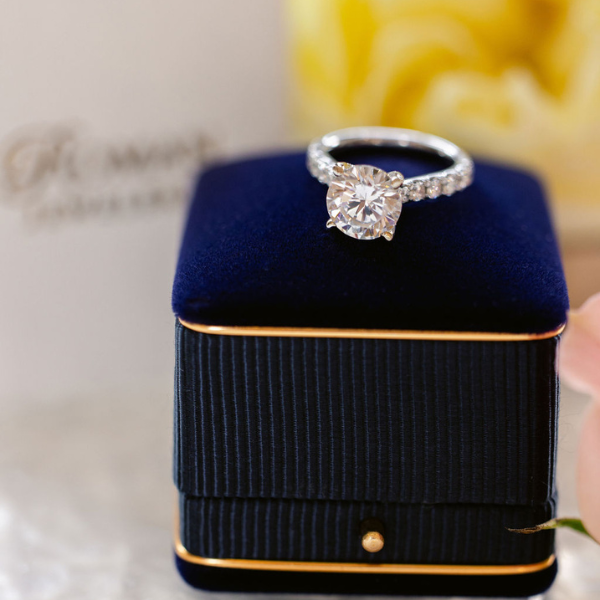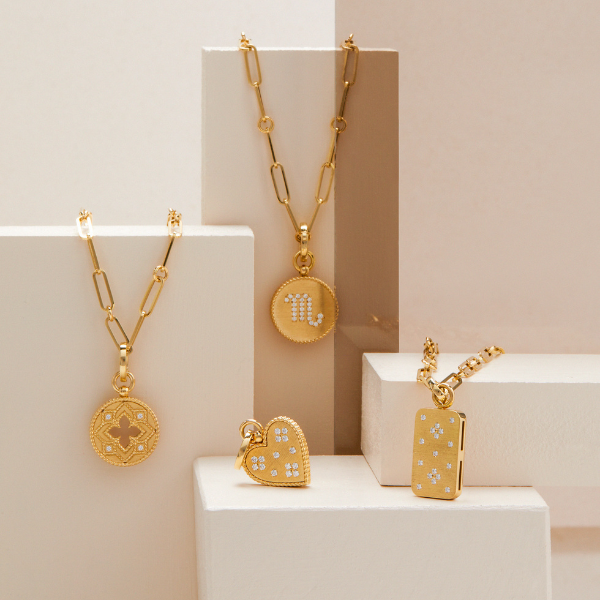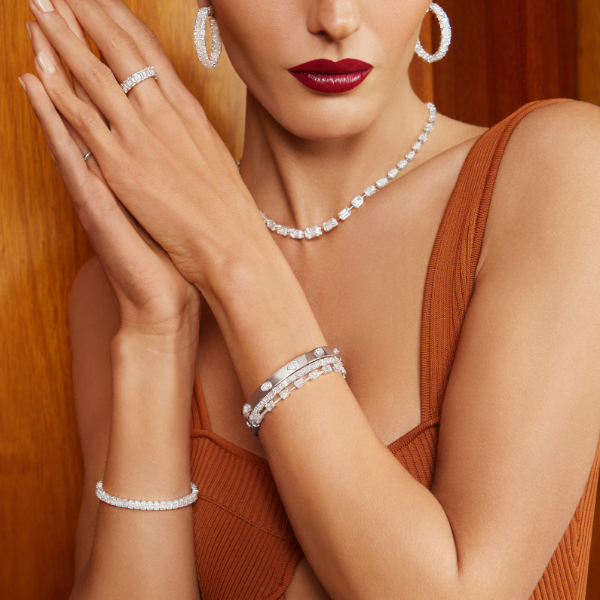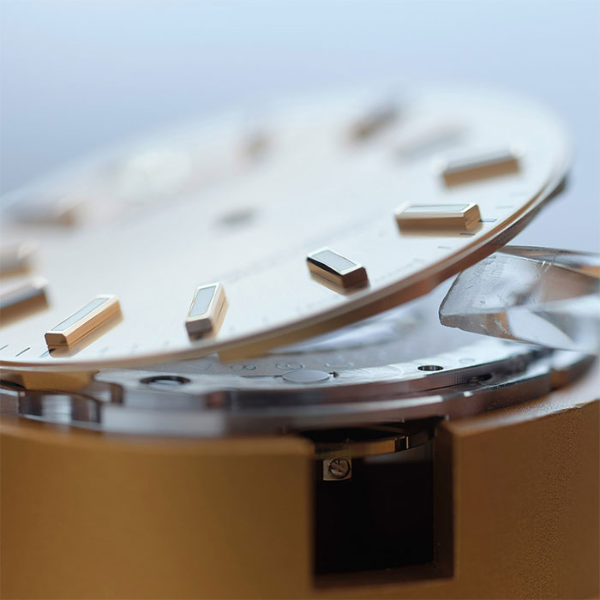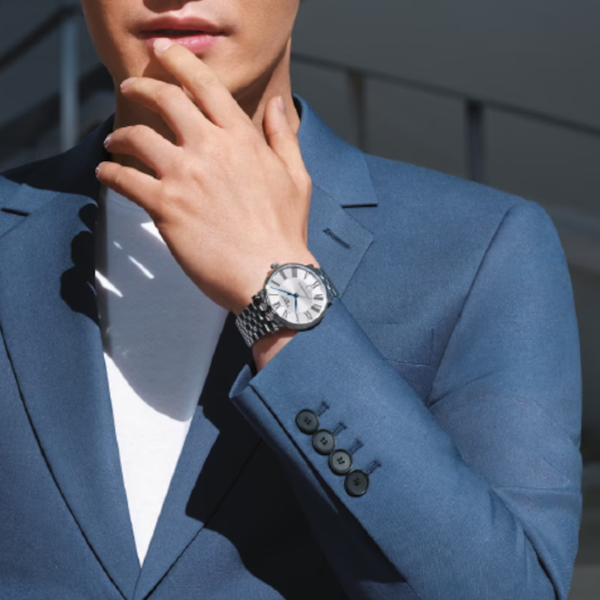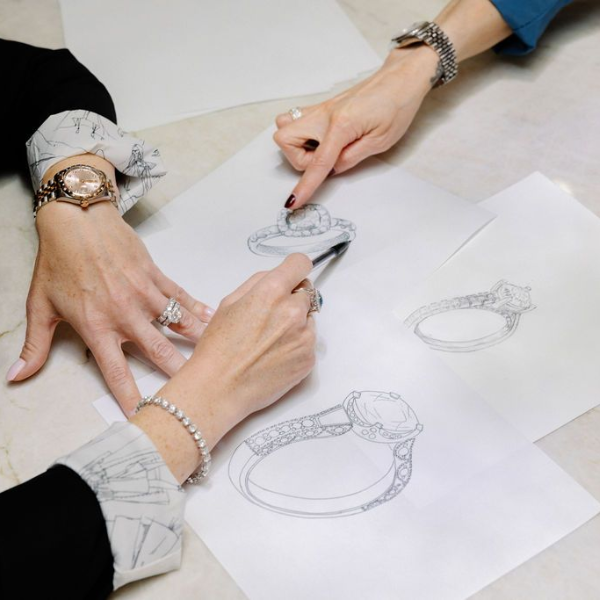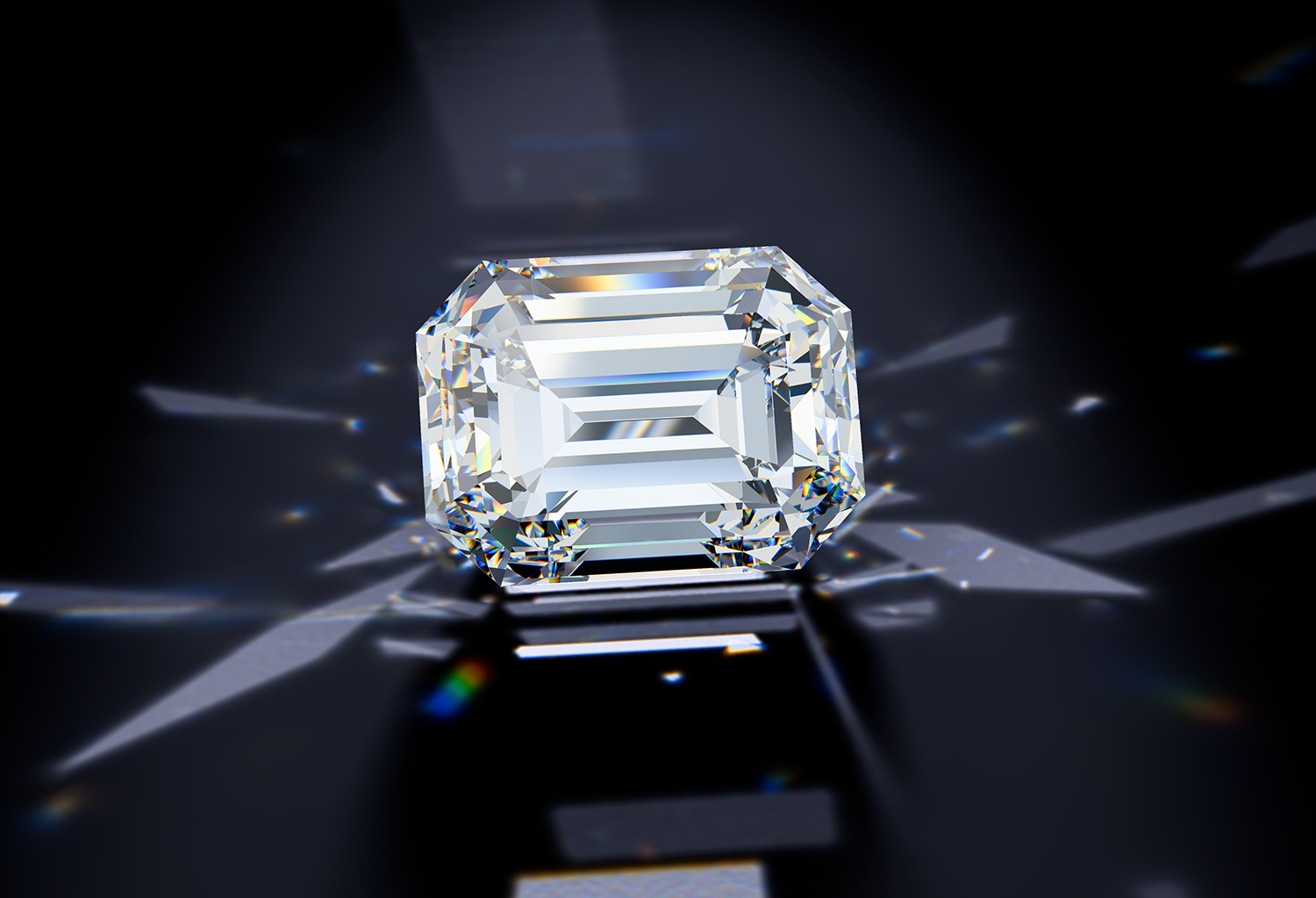How to select a perfect emerald cut diamond engagement ring
You are ready to propose and start your search for an engagement ring. But what kind of an engagement ring should you get? With so many choices of diamond shapes, metals, and diamond shapes the choices are many.
Today, let's talk about an engagement ring with an emerald cut diamond. Emerald cut diamonds have become a very popular choice in engagement rings because of their elegant simplicity. Compared to other diamond shapes, emerald cut diamonds have less sparkle because they have less facets.
When it comes to diamond engagement rings, emerald cut diamonds are a popular choice. These diamonds are known for their rectangular shape and step-cut facets. Yes, steps! Emerald cut diamonds have facets that resemble steps. These step-type facets create a diamond with clean lines and incomparable elegance.
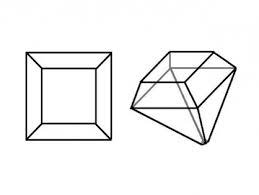
The earliest cuts in the history of the evolution of diamond cutting were simple table and point cuts. The point cut followed the natural cut of the diamond and was not faceted. The table cut was the first diamond cut that had facets. In 1940, a similar step cut followed the table cut, which evolved into what is known today as an emerald cut.
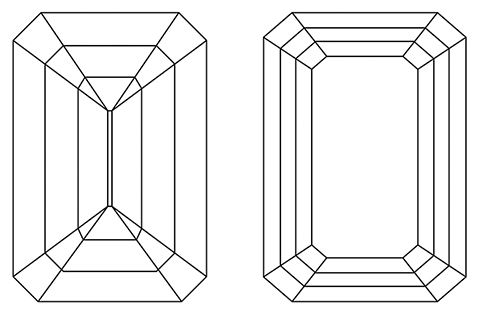 Emerald cut diamonds are often considered to be more vintage-inspired than other diamond shapes. And even though developed only over 80 years ago, it finds its roots within the oldest diamond shapes.
Emerald cut diamonds are often considered to be more vintage-inspired than other diamond shapes. And even though developed only over 80 years ago, it finds its roots within the oldest diamond shapes.
Emerald cut diamonds are a beautiful and unique choice for an engagement ring. They are distinguished by their rectangular shape and cropped corners. That look gives the emerald cut diamonds a vintage appeal. Emerald cut diamonds typically have 58 facets but can have anywhere from 50 to 62.
Emerald cut diamonds are sophisticated, worldly, and glamorous. They elongate the finger, and because they're less pricey than a round diamond, you can go for a little bit bigger diamond. Keep in mind that emerald cut diamonds often look larger than they are because of their elongated shape. if you're looking for a larger size diamond, an emerald cut diamond may be the way to go! In short, emerald cut diamonds make a perfect engagement ring!
Tips for Buying an Emerald Cut Diamond Engagement Ring
When shopping for an engagement ring with an emerald cut diamond ring, it is important to keep in mind the "Four Cs." The Four Cs stand for Carat Weight, Cut, Clarity, and Color. Carat weight is the weight of the diamond measured in carats. Cut refers to the angles and proportions of the diamond, which affects the diamond's symmetry, brightness, fire, and how sparkly the diamond appears. Clarity is how many blemishes or inclusions are present in the diamond and affects the diamond's transparency. Color is judged on a scale from D (no hue) to Z (a yellow hued diamond).
1. Carat weight
Carat weight is simply the weight of a diamond measured in carats. Carat (ct.) refers to the unique unit of weight measurement which is used exclusively to weigh gemstones and diamonds. One point is equal to 1/100th of a carat. So, it follows that one point equals 2 milligrams or 0.002 grams.
There are 100 points in a one-carat diamond. A one-carat diamond will weigh1 carat or 0.2 grams. To learn more about diamond's carat weight, click the link below:
Diamond carat weight explained by GIA (Gemological Institute of America)
2. Cut
Cut tells you how well the diamond has been cut and includes the height, depth, angles, and other factors. It affects the symmetry, brightness, fire, and how sparkly the diamond appears. What is also very important in an emerald cut diamond is the length to width ratio. This is how chunky or elongated the emerald will look on your hand. A 1.35 ratio is going to look more elongated when placed on the wrist in comparrison a 1.60 ratio. The classic length to width ratio for an emerald cut diamond ranges from 1.30 to 1.50. A ratio of 1.40 is considered “ideal”. However, truly, there is no such a thing as an "ideal" ratio because the best ratio would depend on your personal preference. If you favor a square shape, select a diamond with a lower length-to-width ratio. If you prefer an elongated shape, select a diamond with a higher ratio. Truly, there is no such a thing as an "ideal" ratio because it completely depends on the preference of what you consider will look best on your hand. To learn more about diamond's cut, click the link below:
Diamond Cut Explained by GIA (Gemological Institute of America)
3. Clarity
The clarity of a diamond will tell you about what is inside or on the surface of the diamond. Clarity is all about blemishes or inclusions in the diamond and how they affect the diamond's transparency. In an emerald cut diamond set into a white gold or platinum setting, look for VS2 or higher clarity. When it comes for clarity, you should look for diamonds with inclusions outside of the main table (that's the center of the stone), and where the inclusions are largely white or clear. To learn more about diamond's clarity,, click the link below:
Diamond Clarity Explained by GIA
4. Color
Color is judged on a scale from D (no hue) to Z (a yellow-hued diamond). What color emerald cut diamond should you get? Because emerald cut diamonds are less sparkly, it's easier to see their body color, which means there's less sparkle to distract your eye. Now, what color emerald cut diamond should you get? if you're going for yellow or rose gold for the setting—or you happen to like the look of a warmer color—it's not going to matter as much. But if you're going for a white metal, like white gold or platinum, you'll probably want to stick with H or higher for that color grade. If you prefer a yellow gold setting, you can go with a lower color diamond because in a yellow gold setting the color of the diamond won't be noticeable. To learn more about diamond's color,, click the link below:
Learn more about the GIA (Gemological Institute of America) Color system by clicking this link
5. The fifth C, Cost.
Now, this is where all the four mentioned "C"s come together. Carat weight, cut, clarity, and color will determine the price of the diamond. The bigger the diamond is and the better cut, clarity, and color are, the more expensive the diamond is. Now you know why learning about the 4 Cs is so important. Since you, probably, cannot have the best of everything in a diamond, some compromises would have to be made. How about instead of selecting a VVS (Very, very slightly included diamond) clarity diamond you will settle for a VS (Very slightly included) diamond. If the clarity of the diamond is more important to you then anything else, how about a slightly lower color of the diamond? Well, lots to think about, for sure.
The size of the diamond, as well as the quality of the cut, will also impact the price. Choose a budget that you are comfortable with.
Types of settings for an emerald cut diamond
The rectangular shape of an emerald cut diamond can affect the setting of an engagement ring in a few ways. First, the ring will need to be specially sized to accommodate the rectangular shape of the diamond. Secondly, the rectangular shape of the diamond may limit the number and type of settings that can be used. For example, a solitaire setting may not be possible if the diamond is too large or too small. But regardless of the type of setting you choose, the final result is a beautiful and unique engagement ring that is sure to stand out from the rest.
Emerald cut diamonds can be set in a variety of different settings, including solitaire, three-stone, and halo. Choose a setting that you love and that complements the diamond.
Emerald cut diamonds look amazing in engagement rings! The rectangular shape of the diamond is unique and elegant. The diamond halo setting is a good choice if you want to make the diamond look larger. The solitaire setting is also a good choice if you want to make the diamond look larger, because the center diamond is the only diamond in your ring and garners all the attention The best setting for an emerald cut diamond engagement ring depends on your personal preference. Some popular choices include the solitaire setting, the three-stone setting, and the halo setting. Another choice is a setting with side diamonds on the shank of the ring. Also, do not forget to look into bezel and pave' type settings for your diamond engagement ring, Let's take a closer look at these six types of popular settings.
The solitaire setting
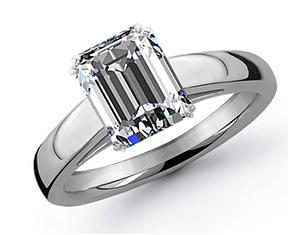 An emerald cut diamond solitaire setting is a popular choice for those who want a simple and elegant engagement ring. This setting showcases the diamond in all its glory, allowing the rectangular shape and step-cut facets to shine. Emerald cut diamonds look great in solitaire settings. Solitaire settings have only one diamond, the center diamond, with no additional side stones. Your center stone is the only diamond in the ring. This is a classic and timeless setting for an emerald cut diamond. The solitaire setting is also a good choice if you want to make the diamond look larger, as the elongated shape of an emerald cut diamond can make it appear larger than it actually is. An emerald cut diamond in an engagement ring looks amazing. And, if you would like to add a modern twist to the solitaire emerald cut engagement ring, set the diamond horizontally, East to West. A horizontal-set emerald cut solitaire has become a popular diamond solitaire ring. It's trendy but timeless.
An emerald cut diamond solitaire setting is a popular choice for those who want a simple and elegant engagement ring. This setting showcases the diamond in all its glory, allowing the rectangular shape and step-cut facets to shine. Emerald cut diamonds look great in solitaire settings. Solitaire settings have only one diamond, the center diamond, with no additional side stones. Your center stone is the only diamond in the ring. This is a classic and timeless setting for an emerald cut diamond. The solitaire setting is also a good choice if you want to make the diamond look larger, as the elongated shape of an emerald cut diamond can make it appear larger than it actually is. An emerald cut diamond in an engagement ring looks amazing. And, if you would like to add a modern twist to the solitaire emerald cut engagement ring, set the diamond horizontally, East to West. A horizontal-set emerald cut solitaire has become a popular diamond solitaire ring. It's trendy but timeless.
The three-stone setting
A three-stone setting is a popular choice for emerald cut engagement rings. This setting features two smaller diamonds on either side of the center diamond, which can help to accentuate the rectangular shape of the emerald cut diamond. The three-stone setting is also a good choice if you want to make the diamond look larger, as the elongated shape of an emerald cut diamond can make it appear larger than it actually is. Keep in mind that a three-stone setting may not be possible if the diamond is too large or too small.
The diamond halo setting
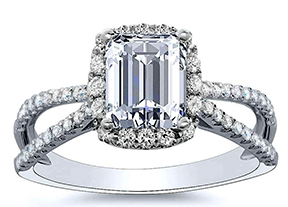 If you are looking for an engagement ring with an emerald cut diamond, be sure to check out the halo-type settings. The diamond halo setting features small diamonds set around the center diamond, which can help to accentuate the rectangular shape of the emerald cut diamond. The halo setting is also a good choice if you want to make the diamond look larger.
If you are looking for an engagement ring with an emerald cut diamond, be sure to check out the halo-type settings. The diamond halo setting features small diamonds set around the center diamond, which can help to accentuate the rectangular shape of the emerald cut diamond. The halo setting is also a good choice if you want to make the diamond look larger.
A diamond halo setting is a great way to add sparkle to an emerald cut diamond. This can make an emerald cut diamond stand out.
Side stones in a setting with an emerald cut diamond as a center stones
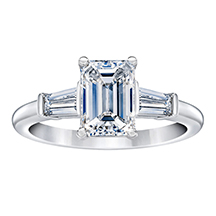
Emerald cut diamond engagement rings look stunning when surrounded by side stones, quite often, two side stones, one on each side. You can choose from tapered baguettes to trapezoids, or even more emerald cut diamonds. And not only diamonds, but you can use any precious or semi-precious colored stones. The side stones exaggerate the step cuts and create a mesmerizing cascade of light as you move your hand. Diamonds, sapphires, and other gemstones can be set into the band of the ring to accentuate the center diamond.
The bezel setting
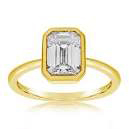
The bezel setting features a metal band that goes around the edge of the diamond, which can help to accentuate the rectangular shape of the emerald cut diamond. The bezel setting is also a good choice if you want to make the diamond look larger and more prominent, as the elongated shape of an emerald cut diamond set in a bezel setting will stand out even more.
To sum up...
Emerald cut diamonds are a stunning and unique choice for an engagement ring. They are distinguished by their rectangular shape and cropped corners with a vintage appeal. With less sparkle than other diamond shapes, they are uniques because of their elegance and simplicity.
Contact
If you're interested in purchasing an engagement ring, contact us at Roman Jewelers, in Bridgewater, NJ. Or visit our website: www.romanjewelers.com
To choose a diamond from our website, click on the link below.
Choose your diamond from Roman Jewelers









